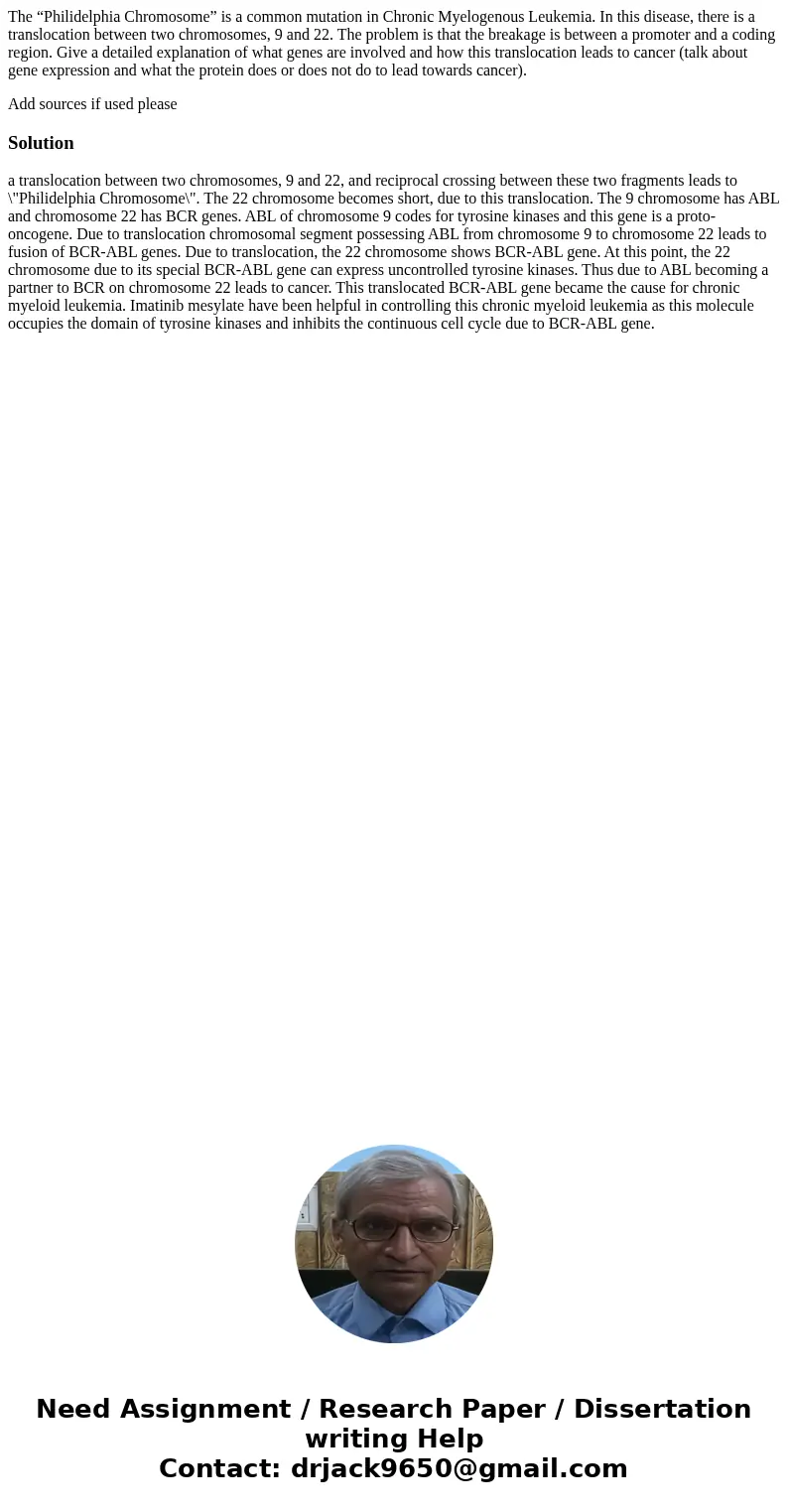The Philidelphia Chromosome is a common mutation in Chronic
The “Philidelphia Chromosome” is a common mutation in Chronic Myelogenous Leukemia. In this disease, there is a translocation between two chromosomes, 9 and 22. The problem is that the breakage is between a promoter and a coding region. Give a detailed explanation of what genes are involved and how this translocation leads to cancer (talk about gene expression and what the protein does or does not do to lead towards cancer).
Add sources if used please
Solution
a translocation between two chromosomes, 9 and 22, and reciprocal crossing between these two fragments leads to \"Philidelphia Chromosome\". The 22 chromosome becomes short, due to this translocation. The 9 chromosome has ABL and chromosome 22 has BCR genes. ABL of chromosome 9 codes for tyrosine kinases and this gene is a proto-oncogene. Due to translocation chromosomal segment possessing ABL from chromosome 9 to chromosome 22 leads to fusion of BCR-ABL genes. Due to translocation, the 22 chromosome shows BCR-ABL gene. At this point, the 22 chromosome due to its special BCR-ABL gene can express uncontrolled tyrosine kinases. Thus due to ABL becoming a partner to BCR on chromosome 22 leads to cancer. This translocated BCR-ABL gene became the cause for chronic myeloid leukemia. Imatinib mesylate have been helpful in controlling this chronic myeloid leukemia as this molecule occupies the domain of tyrosine kinases and inhibits the continuous cell cycle due to BCR-ABL gene.
 Homework Sourse
Homework Sourse